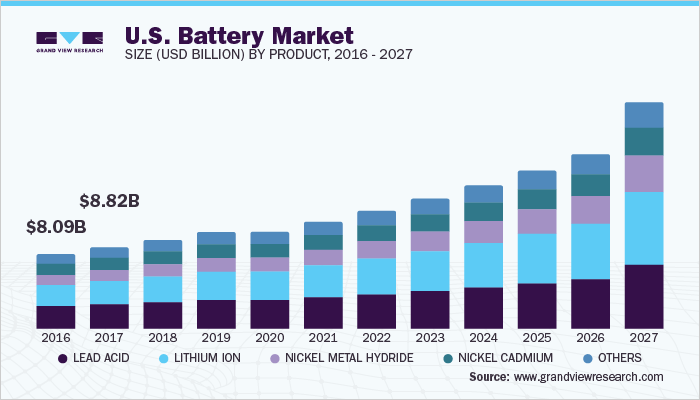“The quickest way to end a miracle is to ask it why it is… or what it wants.” – Frank Riley
Most of us operate on the idea that batteries aren’t all great. They die. You have to replace them… are they full/charged? At birthdays and holidays, you’ll often hear, “What kind of batteries does it take?” (In reference to cell type) — but a “battery” truly is an entire category of “portable power”. A holding bank of stored energy.
How come we keep hearing about Lithium-Ion batteries? And if they’re so great, why don’t our cell phones last longer than half a day? There are wide a variety of battery/cell types that we probably have never heard of. The battery that is in your combustion engine automobile is very different than the battery you use in your TV remote. Conversely, the battery you use in your electric beard trimmer is probably the same as most modern day electric vehicles.
At the end of the day, all batteries store chemical energy and provide electrical energy during discharge.
Saemsen and Battery Types
The Saemsen circuit theoretically can work with all possible battery types given the system is balanced and configured correctly. Below is a quick overview of some common battery types.
Nickel Cadmium (NiCd) — mature and well understood but relatively low in energy density. The NiCd is used where long life, high discharge rate and economical price are important. Main applications are two-way radios, biomedical equipment, professional video cameras and power tools. The NiCd contains toxic metals and is environmentally unfriendly.
Nickel-Metal Hydride (NiMH) — has a higher energy density compared to the NiCd at the expense of reduced cycle life. NiMH contains no toxic metals. Applications include mobile phones and laptop computers.
Lead Acid — most economical for larger power applications where weight is of little concern. The lead acid battery is the preferred choice for hospital equipment, wheelchairs, emergency lighting and UPS systems.
Lithium Ion (Li‑ion) — fastest growing battery system. Li‑ion is used where high-energy density and lightweight is of prime importance. The technology is fragile and a protection circuit is required to assure safety. Applications include notebook computers and cellular phones.
Lithium Ion Polymer (Li‑ion polymer) — offers the attributes of the Li-ion in ultra-slim geometry and simplified packaging. Main applications are mobile phones.
EV Battery Type Exploration
The electric vehicle race is bringing about new battery types. Specifically the Solid-State Lithium-Ion battery and the Lithium Iron Phosphate. This short video from Ebikeschool.com gives a detailed explanation of the differences between Lithium Ion and Lithium Iron Phosphate batteries.
We know the Saemsen technology works with NiMH battery cells – Stay tuned for research and development updates on Lithium Ion and other types!
More Info Links
https://components101.com/articles/different-types-of-batteries-and-their-uses
https://batteryuniversity.com/learn/archive/whats_the_best_battery
https://www.grandviewresearch.com/industry-analysis/battery-market
Breakthrough Allows Inexpensive Electric Vehicle Battery to Charge in Just 10 Minutes





Comments are closed.